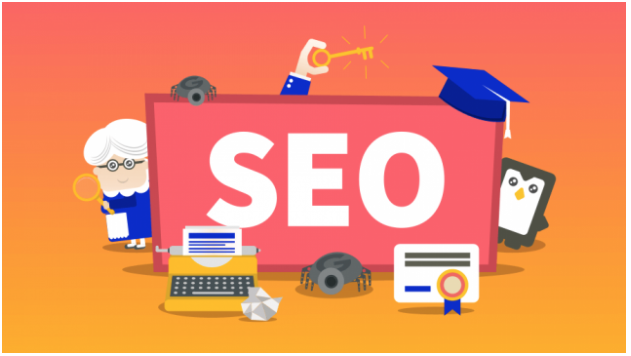5 Tips To Reduce Your Cost Per Click Using SEO Strategies
Every day, marketers spend hundreds of millions looking for ways to connect with their audience, increase brand awareness, make sales, and more. While there is arguably no better method of doing paid online advertising like PPC-based strategies, it is still hit and miss for a lot of marketers. But what if there was an organic way to bring down your ad costs while maintaining or increasing conversion?
When it comes to paid advertising, every digital marketer knows about the term ‘cost per click’ or CPC for short — not to be confused for cost per conversion. If you’re running any form of paid advertising, this ad feature is the metric that determines how much you’re spending to get one customer to click on your ad.
Typically, the higher the CPC of an ad, the more expensive it is for any digital marketer’s budget. And ad costs rise all the time, so this isn’t a strange situation to find oneself in.
Ideally, while there is a fixed cost per click average for most major industries, no digital marketer or advertiser would turn their nose up at the promise of a lower CPC. This is, of course, as long as it isn’t so low that the ad click-through rate (CTR) ad conversions start to suffer.
So how do digital marketers get here? How do they lower their CPC while maintaining or increasing their ad effectiveness?
The answer is in Search Engine Optimization. Yes, SEO and SEM (Search Engine Marketing) may be seen as different forms of digital marketing — and they are — but they can be used together in ways that can benefit digital marketers and their wallets.
Here are five top SEO tips you can lower your cost per click when setting up an ad campaign.
5 Tips To Reduce Your Cost Per Click Using SEO Strategies
#1. Research And Utilize Keywords With a Proven Track Record of Success
When selecting the keywords to bid on for your advertising campaign, you should generally have two things in mind.
- The keywords must be appropriate for your content like your blog, podcast, products, and services.
- It must have a proven track record of success.
Depending on whether your marketing campaign is focused on sales or awareness/visibility, every business’s keyword needs will vary. A fashion e-commerce store like Lyst would naturally be on the lookout for keywords like ‘best fabric sneakers for men under 40,’ while professional writing recommendation platforms like Writing Judge or Pick The Writer would want keywords like ‘top emergency writing services for weekend jobs.’
To find the right keywords, start by writing down all the phrases and words that sufficiently point to the subject of the campaign you’re about to run. The next thing to do is to implement Latent Semantic Indexing (LSI) to find the most related and useful iterations of your chosen keywords. The only way to find all these keyword variations is to use SEO tools like Wordtracker, Google Keyword Planner, or Serpstat.
These tools can also help you to curate keywords from successful content and ads set up by your competition. This way, you’re discovering keywords that already have a proven track record of success. Cross-reference these with the keywords you already have and select the ones that make the most sense for your campaign. Ideally, these keywords should be effective but still low enough in terms of CPC to enable you rival or outbid your competition.
#2. Craft The Perfect keyword-relevant Ad Copy
Your ad copy is usually the first interaction a potential customer has with your sales funnel. You have to make sure that this copy is doing all it can to turn impressions into clicks.
From the ad headline, your ad copy has to demand the user’s attention. Also, make sure that the headline immediately addresses the user’s goal upfront.
Next is the body of your ad copy. At this point, you should have all the keywords you need. Use at least one that most fits the content of your landing page and incorporate it/them into the ad copy.
No ad copy is concrete without some kind of instruction or direction. Make sure the ad contains a call to action (CTA). Depending on the reason for running the ad, it could be phrases like ‘purchase now,’ ‘call us now,’ ‘limited time offer,’ and much more.
Include extensions like additional relevant links that feed the intent of the ad copy, extra links, your business address, a phone number, and more. This helps to make your brand appear legit and trustworthy. Consequently, you should expect a higher ranking in search engine results pages (SERPs), an increase in click-through rate, and a resultant drop in the average average cost per conversion and pay per click.
Like when you did your keyword research, tools like Serpstat, Ahrefs, and SEMRush can help you analyze your competitor’s successful ad copies. Remember, the point of this exercise is to get a sense of what they’re doing right, not to steal their ad copy verbatim.
#3. Schedule Your Ad According to Your Audience’s Schedule
Wrong ad scheduling is akin to going to see someone when they’re not at home. You have to make sure that your ads are running at the optimal conversion time — that is, the time and day when your audience is usually online. Otherwise, you’ll just be wasting impressions and consequently raising your cost per click.
This will be different for most ad campaigns. For example, you’re targeting teenagers while school is in session, your ideal time could be in the evening after schools have closed for the day, during the weekends and on holidays.
To be able to discover the days and times that your ad delivers the best results, you’ll need a few months for your Google Adwords account to gather enough data on your audience. This will help you make informed decisions on how you tweak your ad schedule.
#4. Set Up Your Landing Page For The Optimal User Experience
Generally, ad clicks are proof that your ad copy and targeting are on point. But if users continue to bounce off your landing page, something is wrong with its content.
Like the ad copy, your landing page should contain robust and relevant information (text, videos, and images) that matches what the user is looking for. The page content should also be optimized for the keywords used in the ad copy. Make sure that the headline on the ad copy and the landing page is the same. This not only helps a user follow through on the CTA in the landing page, but it also helps the page to rank in SERPs.
If you’re running more than one ad for your campaign, create a separate landing page for each ad. This way, you know which ads are performing well and the ones doing badly. This ultimately helps your CPC. Also, make sure your landing page is optimized for loading speed and mobile.
#5. Keep An Eye on Your Ad Metrics
Now that you’re done setting up your campaign, you have to continually keep an eye on it. Your ad budget is an investment in your business, and you want to make sure that it is being utilized optimally.
Beyond CPC, there are many other metrics and statistics to keep an eye on — number page visits, unique page views, conversion rate, bounce rate, and much more. Each of them gives you invaluable feedback on different aspects of your campaign. You can analyze these in the frame of different time segments (week, biweekly, monthly, yearly) too.
With tools like Google Analytics and a few others mentioned in this post, you can track the performance of these metrics. This will help you discover the elements of your campaign that are booming and the ones that aren’t. Typically, you will want to double your efforts on practical strategies and improve or cut out the ones that aren’t working.
You need to always be improving the performance of your campaign to help you make the most of your budget and to make sure that you stay ahead of your competitor’s efforts.
Final Words
To run a truly effective paid advertising campaign, you need to be aware of all its moving parts and analysis elements, CPC is one of the chief elements. Before you make the first move on your campaign, think critically about the objective as it relates to the current market conditions. This will help you gather all the necessary information you need and apply all the SEO strategies mentioned above effectively to reduce your CPC while optimizing your campaign’s returns.
Top 10 Magento 2 SEO Extensions to Boost Your Store’s Visibility
SEO is the key to a successful store! Have you ever given thought, if your store is simply…
0 Comments12 Minutes
How to Optimise Your PPC Campaigns with AI
As the methods of Internet marketing evolve, Pay-Per-Click (PPC) advertising remains one of the…
0 Comments10 Minutes
Putting Cybersecurity Under the Spotlight: How Security Audits Strengthen Your Defenses
While organizations understand the importance of cybersecurity, there is an opportunity for many…
0 Comments12 Minutes
How Marketing Agencies Can Choose the Best High-Performance SEO Tools
High-performance SEO tools combine comprehensive features, durability, speed, and accuracy. They…
0 Comments9 Minutes
Simplify the Running of Your Business With These Tips
Finding enough hours in the day to tackle all the jobs on your to-do list can be a major issue…
0 Comments4 Minutes
Best SEO Practices for Multi-Location Businesses
Businesses operating across multiple locations benefit from unique opportunities but also face…
0 Comments7 Minutes
Unveiling the 7 Essential Components for an Exceptional Website
Even a beginner can identify what makes a good website, but when it comes to building one, things…
0 Comments8 Minutes
Top Blockchain Trends to Watch in 2024
Blockchain has time and again proved its capacity to redefine many sectors and this prediction of…
0 Comments6 Minutes








